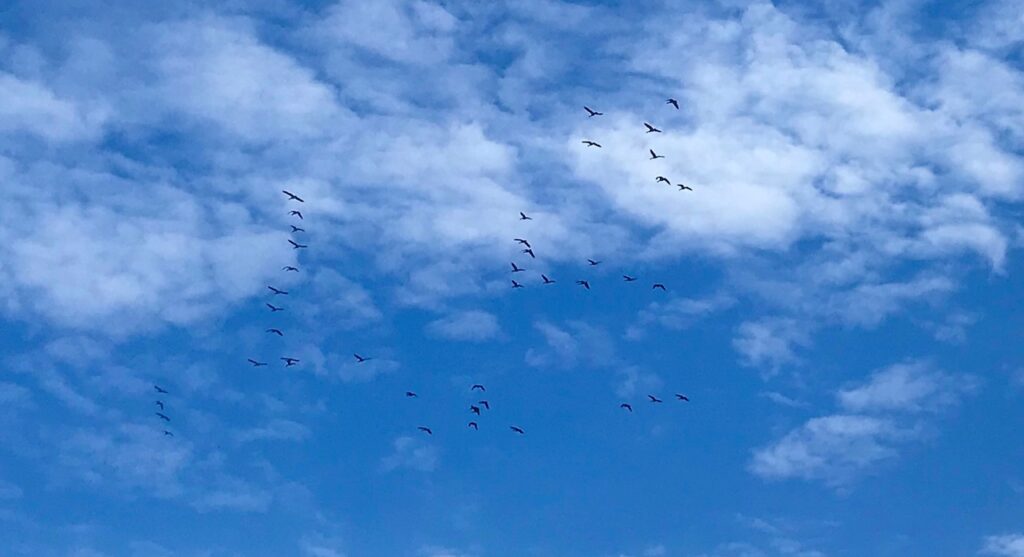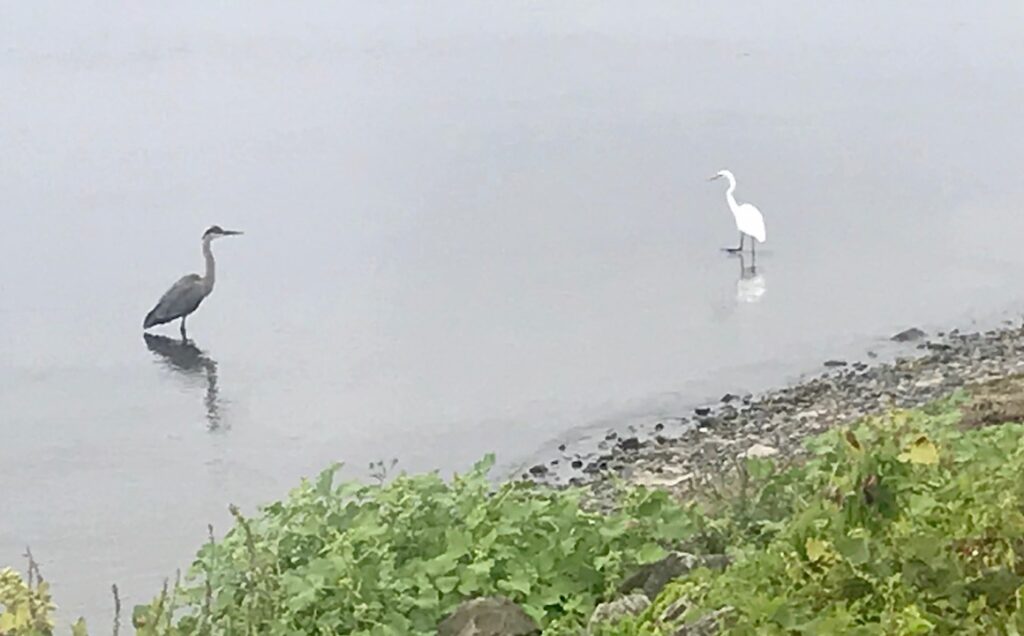Migrating birds are heading south to warmer regions for the upcoming winter. There are actions that we can take to help them on their way.

It seems like only yesterday when we were welcoming them into our gardens and hearts. But it’s now time to bid adieu to many of our feathered friends; they’re heading for warmer climes.
Quebec is home to more than 400 bird species, according to Richard Gregson, a retired biologist and avid birder who lives in Baie d’Urfé with his wife and fellow birder Jean Harwood-Gregson. “People should remember that there are at least 80 species and sometimes more that stay here all year long,” he says. “The others migrate south.”
Some have already left (“they start to leave at the end of August”), but there is a steady stream leaving this week. Much of the migration will be complete by mid-October, he added.
“Migration comes in waves,” says Dr. Gregson, author of the book 1001 Species – A Natural History of a Small Town. “Shorebirds (Plovers, Killdeer, Yellowlegs) are the first to leave. Songbirds are next. And the Sapsuckers have already left.”
But there are other species that nest and reproduce in Quebec’s northern regions, which are in full migration and are stopping in the West Island this week to rest and refuel. “At the moment, we’re getting White-throated Sparrows from farther north. They’re coming through,” he said.
Some so-called “irruptive” species—birds that breed and live in northern boreal forests but come to southern Quebec during the winter if their food supply is insufficient—include Redpolls and Pine Siskins.
If you’ve recently observed large black birds soaring on the thermals above the West Island, there’s a chance you’ve been seeing turkey vultures, which have moved their habitat northward into Quebec as the climate has warmed. They’re large and they eat carrion. “They’re also migrating south right now,” Dr. Gregson says.

All of this movement means that humans on the ground have a responsibility toward their feathered friends. “We should turn off or at least turn down our lights during the migration period,” Dr. Gregson says. “Bear in mind that birds cover long distances and a lot of them fly at night.”
Night-migrating birds need darkness to navigate while they fly. In Canada, between 16 and 42 million birds die annually after they collide with lighted windows, according to the federal government. “Outdoor security lights are disruptive to animals, quite apart from being irritating when they spill into one’s windows,” Dr. Gregson says. “We’re not saying that you shouldn’t have lights, but to keep it in proportion.”
Ideally, he says, flood lights that are installed on houses for security should be replaced with motion-activated lights. And if a porch light is necessary for human navigation, it should point downward. Drapes should be drawn and blinds down at night to prevent indoor artificial lighting from shining out through windows.
A bylaw in nearby Sainte-Anne-de-Bellevue, which was designated a Bird Friendly City by Nature Canada last spring, requires outdoor lights to be “full cutoff” fixtures, which illuminate downward rather than skyward.
The municipality is a key flyway for many species of migrating birds, says city councillor Ryan Young. “The whole St. Lawrence and Ottawa river valleys are major flyways,” he said. “Birds navigate along them. The western tip of the Montreal Island is where the rivers converge.”
An avid birder from childhood, Mr. Young has observed a broad range of birds in Sainte-Anne during migration season, including bald eagles. “I was in the Morgan Arboretum this morning and saw a flock of at least 200 Common Grackles,” he said, adding that when he receives news of rare-bird sightings in the area, he goes to observe them.
He said that researchers at the nearby McGill Bird Observatory, who monitor bird populations in the area, discovered that the Morgan Arboretum is a key stopover spot for birds that spend about 50 days molting there at the end of the summer season before continuing their migration south.
Mr. Young says that West Islanders can erect bird-feeders in the autumn to help migrating birds. Feeders also nourish “irruptive” species from the northern boreal forests throughout the winter months.
Dr. Gregson says the gift that we can give migrating birds is a place where they can rest and rebuild their strength during their long journey. “If you have a garden, you can offer food, water and shelter,” he says, adding that the best place for bird feeders is not in the exposed area in the middle of a lawn, but close to shrubs and trees, where birds can go for protection from the elements and predators.









